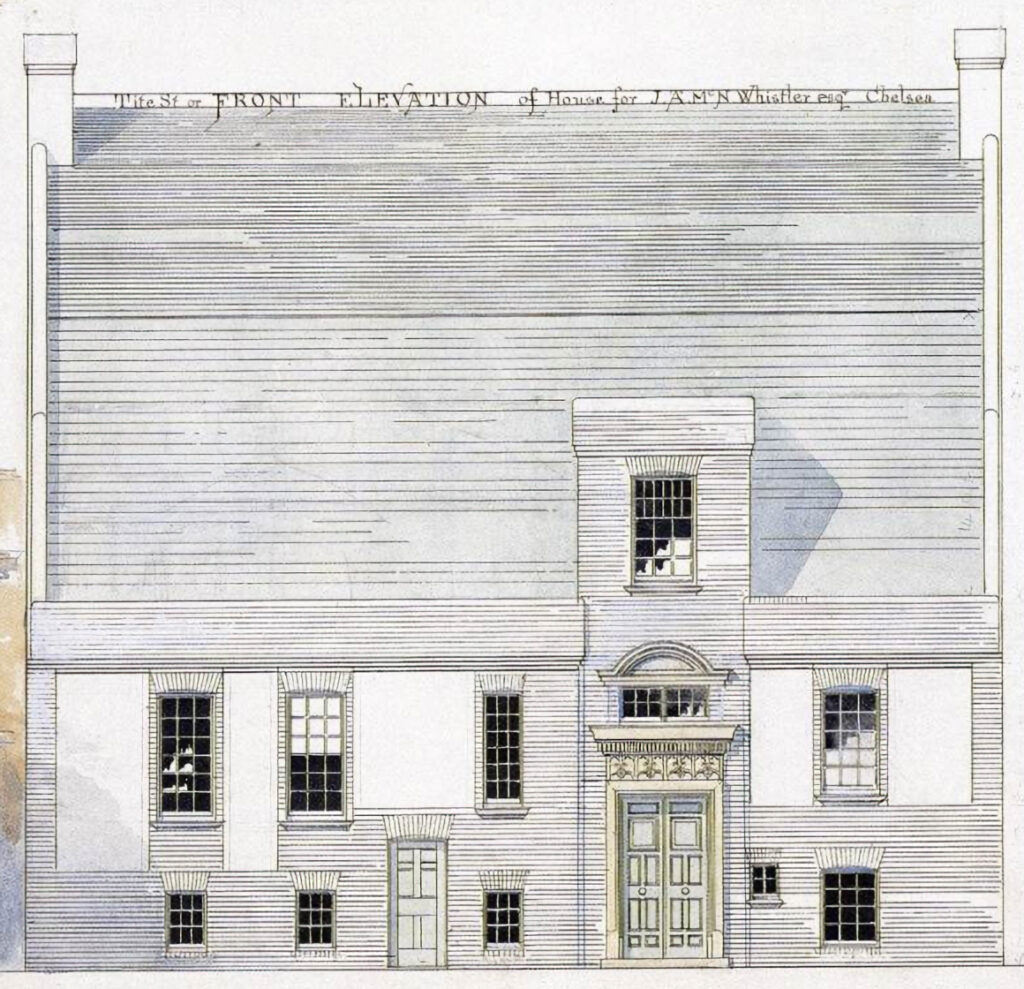On this day 145 years ago—September 19, 1879—James Whistler lost the house of his dreams.
Designed by Whistler himself and his good friend architect Edward Godwin, the White House—the one in Chelsea, England, and not Washington D. C.—was meant to stand out from all of the other buildings on Tite Street, with its white façade that contrasted with Chelsea’s ubiquitous red brick, with its expansive and steeply sloping green roof, and with its lack of the florid ornament that marked Victorian architecture of every style. Like Whistler’s paintings, it was meant to be, in Godwin’s word, a “simple color harmony.” The house cost over £2,700 to build—over $250,000 today—but it actually cost Whistler next to nothing, since he took out two mortgages for the house that he could not hope to repay—and, in the end, he didn’t.
Designed by Whistler himself and his good friend architect Edward Godwin, the White House—the one in Chelsea, England, and not Washington D. C.—was meant to stand out from all of the other buildings on Tite Street, with its white façade that contrasted with Chelsea’s ubiquitous red brick, with its expansive and steeply sloping green roof, and with its lack of the florid ornament that marked Victorian architecture of every style. Like Whistler’s paintings, it was meant to be, in Godwin’s word, a “simple color harmony.” The house cost over £2,700 to build—over $250,000 today—but it actually cost Whistler next to nothing, since he took out two mortgages for the house that he could not hope to repay—and, in the end, he didn’t.
Whistler left the house a complete mess. The house’s better furnishings and Whistler’s salvageable art had already been removed for a later auction, leaving the house awash in detritus: “The Whistlerian Derangement,” as one newspaper put it. There was not much to sell, then, besides the house itself, but the house did sell, for a good price. And, to Whistler’s mortification, his beloved White House was sold to one of the tribe that Whistler loathed: it went to the art critic, Harry Quilter. To make things even worse, Quilter wasted very little time before he effaced Whistler’s and Godwin’s design by ordering extensive renovations to the building.
In that mutilated form, the White House survived until the 1960s. In 1962 it was listed as a grade II historical building, which meant that it could not be destroyed without town planning permission. But just a year later, the planning board granted that permission. Harry Quilter was apparently the one completely responsible for that decision: the board decided that Quilter’s renovations had destroyed the architectural value of the building. Enemy, indeed!

The White House, Chelsea, after Harry Quilter’s Renovations

